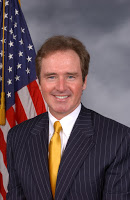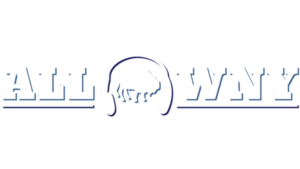STAFF REPORTS
news@allwnynews.com

“This bipartisan agreement isn’t perfect but it is a vast improvement to the White House budget request that would have slashed funding for the Great Lakes, transportation, community development and biomedical research, all of which are areas that support jobs and feed Western New York’s resurgence,” said Congressman Higgins, a member of the House Budget Committee.
Below is a breakdown of funding priorities in the FY17 Omnibus bill of particular relevance to Western New York:
Arts and Humanities
- $150 million for National Endowment for the Arts (NEA) and National Endowment for the Humanities (NEH) – $2 million above FY2016 level
- $27 million for Art Education
Defense:
- Prohibits funding for a new Base Realignment and Closure (BRAC) round, protecting the Niagara Falls Air Reserve Station.
Education
- Includes $22.5 billion for Pell Grants, which is the same as the 2016 enacted level. When combined with mandatory funding, these discretionary funds enable the maximum grant to increase to $5,920, an increase of $105 in the 2017-2018 school year.
- Reinstates year-round or summer Pell grants, which is estimated to provide one million students an additional Pell grant of, on average, $1,650.
- $9.3 billion for Head Start, which is $85 million more than the 2016 enacted level
Energy
- West Valley: $66,413,000, a $7.2 million increase over FY ’16 Enacted Level
- $2.1 billion for Energy Efficiency and Renewable Energy, +$17 million from FY ’16
- $3.4 billion for Low Income Home Energy Assistance Program (HEAP), level with FY ’16 enacted level
- $112 million for Formerly Utilized Sites Remedial Action Program, level with FY ’16 funding
Great Lakes
- · $300 Million for Great Lakes Restoration Initiative (GLRI), level with FY ’16 funding
Opioids
- $3.8 billion for the Substance Abuse and Mental Health Services Agency (SAMHSA), which is $35 million more than the 2016 enacted level
- SAMHSA also received $500 million in 2017 through the 21st Century Cures Act.
- The roughly $1 trillion spending agreement also includes $800 million total – up from $150 million in the last budget – that will be divided among opioid addiction programs at the Centers for Disease Control and Prevention, the Substance Abuse and Mental Health Services Administration, and the Health Resources and Services Administration.
Historic Preservation
- $19.82 million for the Heritage Partnership Program, providing continued support for the Erie Canalway Heritage Corridor and the Niagara Falls Heritage Area
Homeland Security
- $14.3 billion for Customs and Border Protection, $1 billion more than FY16
- Prohibits the collection of new land border fees or the study of the imposition of such fees.
- Does not include funding requested by President Trump to build a border wall or fencing on areas of the U.S.-Mexico border where no fencing currently exists
Housing
- $3 billion for Community Development Block Grant (CDBG) program – at FY2016 level
- $145 million for Lead Hazard Control – $35 million more than FY 2016
- $40 million for HUD-Veterans Affairs Supportive Housing program
- $2.4 billion for Homeless Assistance Grants- $133 million more than FY2016
- $502 million for Housing for the Elderly- $70 million more than FY2016
Infrastructure
- $500 million for the National Infrastructure Investments (TIGER) grants program, which is the same as the FY2016 enacted level.
- $2.4 billion for Capital Investment Grants used to build or expand subway, light rail, and commuter rail transit systems, which is $236 million more than the FY2016 enacted level.
- $1.5 billion for Amtrak, which is $105 million more than the FY2016 enacted level.
Interior
- $1.394 billion for the Clean Water State Revolving Fund, which is equal to the 2016 enacted level
- $863 million for the Drinking Water State Revolving Fund, which is the 2016 enacted level
Justice/Service
- Community Oriented Policing Services: $221,500,000 total, increase of $9,500,000 from enacted FY16
- Corporation for National and Community Service (CNCS): $1 billion total, supporting AmeriCorps, YouthBuild & SeniorCorps
Medical Research
- Includes $34.1 billion for the National Institutes of Health (NIH), which is $2 billion more than the 2016 enacted level, providing funding authorized in the 21st Century Cures Act, approved by the House of Representatives last July.
The increased funding will support:
- $400 million more to research Alzheimer’s disease
- $476 million more for the National Cancer Institute
- $120 million more for the Precision Medicine Initiative
- $110 million more for the BRAIN Initiative, to support work mapping the human brain
- $50 million more to push the search for new antibiotics for resistant infections
- In addition, a funding increase is provided to every Institute and Center at NIH to continue research investments
Social Security
- Directs SSA to submit a report to Congress within 90 days of enactment a plan outline to reduce the backlog on claims for Social Security disability.
The federal budget is currently funded through May 5, 2017. The budget document approved by the House now moves to the Senate for consideration and approval.


